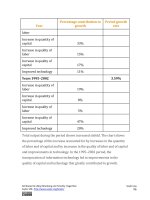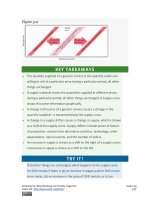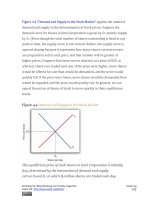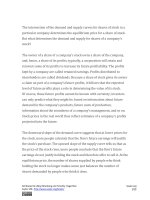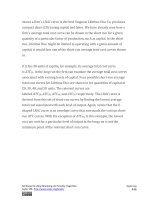Authors libby rittenberg 899
Bạn đang xem bản rút gọn của tài liệu. Xem và tải ngay bản đầy đủ của tài liệu tại đây (532.29 KB, 1 trang )
Full employment will be restored, which means both countries will be back
at the same level of employment they had before trade.
Finally, note the fact that the two countries end up at C (Panel (a)) and C′
(Panel (b)). These points lie outside the production possibilities curves of
both countries. Notice that each country produceson its production
possibilities curve, but international trade allows both countries
to consume a combination of goods they would be incapable of producing!
We see this same phenomenon in individual households. Each household
specializes in an activity in which it has a comparative advantage. For one
household, that may be landscaping, for another, it may be the practice of
medicine, for another it may be the provision of childcare. Whatever the
activity, specialization allows the household to earn income that can be
used to purchase housing, food, clothing, and so on. Imagine for a moment
how your household would fare if it had to produce every good or service
it consumed. The members of such a household would work very hard, but
it is inconceivable that the household could survive if it relied on itself for
everything it consumed. By specializing in the activity in which each
individual has a comparative advantage, people are able to consume far
more than they could produce themselves.
Despite the transitional problems affecting some factors of production, the
potential benefits from free trade are large. For this reason, most
economists are strongly in favor of opening markets and extending
international trade throughout the world. The economic case has been a
powerful force in moving the world toward freer trade.
KEY TAKEAWAYS
Attributed to Libby Rittenberg and Timothy Tregarthen
Saylor URL: />
Saylor.org
899
